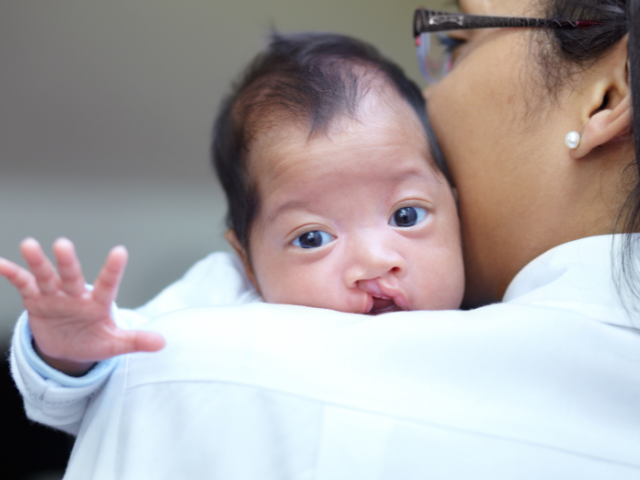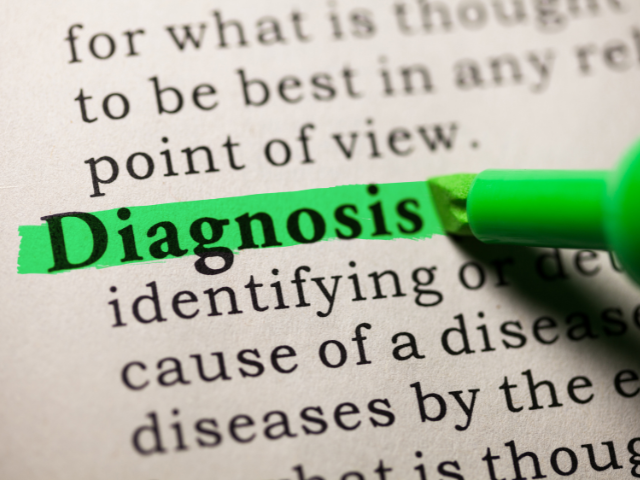How is Craniofacial Anomaly Diagnosed?
In most cases, a craniofacial anomaly is apparent at the time of birth. However, in some cases, it may take some time to show up when the baby’s head starts to grow disproportionately. You can identify a craniofacial anomaly by examination alone. However, to finalize the diagnosis, order an MRI or CT scan of the skull and brain.
The baby’s head grows fast in the first year of life. Therefore, craniofacial anomalies are diagnosed in the first few years when timely treatment is available. You may need to refer the patient to a neurosurgeon who can examine the baby and decide on a future treatment plan.
Treatment for Craniofacial Anomalies
Craniofacial and minimally invasive surgery are available options for treating craniofacial anomalies. A pediatric neurosurgeon will collaborate with a pediatric plastic surgeon to operate on the patient. Surgical procedures that help correct craniofacial anomalies are:
Craniofacial Surgery: Craniofacial surgery is performed on patients with craniosynostosis and other syndromes. It helps correct the physical formation of the skull and facial bones while maximizing the baby’s functioning. It can be a complex, intensive surgery in which parts of the skull are removed, replaced, and reshaped.
Minimally Invasive Surgery: In some cases, when the anomaly is diagnosed before the baby is 3 months old, the surgical team may be able to perform minimally invasive procedures. These are endoscopic procedures that carry a lower risk of blood transfusions and surgery-associated complications. Moreover, they guarantee fast patient recovery.
Nursing Assessment Priorities
Children with craniofacial abnormalities encounter difficulty with feeding, speech and language, ear infections and hearing, and breathing and nasal resonance, along with dental and orthodontic issues.
The structural abnormalities can make breastfeeding a challenge, as the infant cannot suck the nipple properly. At that stage, ensuring adequate nutrition and overcoming feeding challenges is crucial for their growth and development.
For speech concerns, early intervention with a speech therapist is suggested to help monitor the child’s progress.
In infants with cleft lip and palate, the alignment and development of teeth may get impacted, leading to common dental problems, such as missing teeth, dental decay, and malocclusion. This could require an orthodontist or a dentist to intervene and ensure proper oral health and function.
Infants with craniofacial abnormalities also are at risk of developing otitis media and hearing loss because of the Eustachian tube dysfunction. To prevent potential hearing impairment, timely intervention with frequent monitoring is necessary.
Babies born with cleft palates may have nasal resonance, which can lead to nasal airway obstruction. To manage this, nasal surgery, speech therapy, and continuous nasal function monitoring are necessary.
Nursing Interventions in Craniofacial Abnormalities
Babies diagnosed with cleft lip and palate may have difficulty feeding, which can lead to aspiration. To prevent that, nurses can take the following steps:
- Monitor and check the infant’s breath rate, depth, and effort. Assess the baby’s skin color and capillary refill, which indicate low oxygenation.
- Check the baby for abdominal distention caused by swallowing extra air during bottle feed. Abdominal distention can cause upward pressure on the lungs and the diaphragm, eventually compromising respiration.
- Place the infant in a position of 30 degrees to 45 degrees. This prevents the tongue from falling back and obstructing the airway. The semi-upright position also helps limit fluid regurgitation and burping and prevents the entrance of milk into the Eustachian tubes and middle ear space, hence lowering the incidence of ear infections.
- Allow the baby to swallow milk during nursing sessions and provide oral care with sterile water. Use a saline solution to gently clean the suture line.
- Provide adequate nasal and oral suctioning to maintain airway breathing and to improve oxygenation by getting rid of excess fluids and secretions in the nasal or oral cavities.
- Frequent burps can help reduce excessive swallowing air and prevent spitting up. Hence, feed them slowly and burp frequently.
With cleft lip and palate, the baby’s sucking ability may be impaired, leading to poor feeding and low body weight. To manage that, nurses can:
- Check the child’s sucking and swallowing abilities and ensure they have adequate food intake.
- Document the baby’s daily weight and check if they are underweight.
- Guide the mother in nursing sessions. Educate them to apply pressure to the areola using her fingers, insert the nipple inside the infant’s mouth, and hold it during the feeding session. Also, encourage them to burp the baby after every nursing session. Moreover, if she finds it difficult to feed the baby, ask the mother to pump the milk and feed it through the bottle.
- Assess the family member’s anxiety and help them cope with the situation.
While there are no guidelines to help prevent craniofacial abnormalities, the Centers for Disease Control and Prevention (CDC) suggests that mothers follow a healthy lifestyle before getting pregnant. They should avoid excess sugar consumption, quit smoking, and consume a diet rich in folic acid or take folic acid supplements, especially in the first trimester.









